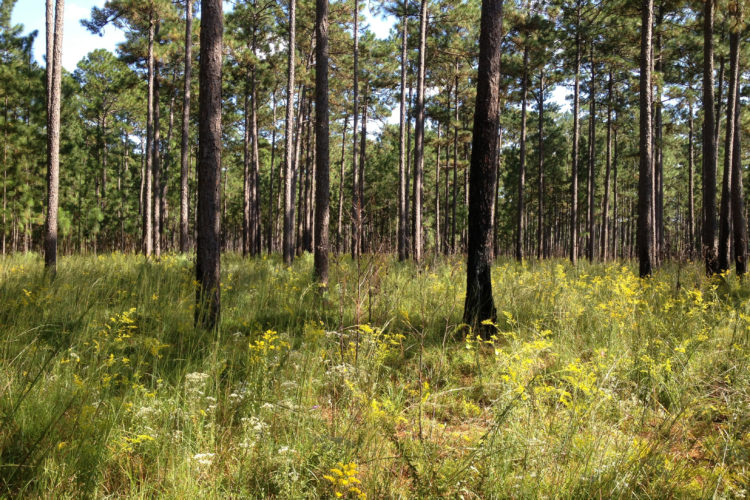We have much more to do and your continued support is needed now more than ever.
Restoring Longleaf Pine on Agricultural Land Benefits Wildlife
Restoring longleaf pine savannas of the southeastern United States benefits some of the world’s most diverse plant communities and wildlife species. When forests are managed with the traditionally open canopy structure, a savanna-like environment is created allowing sunlight to stream to the forest floor where grasses and herbs grow for wildlife to live and graze. Unfortunately, a long history of over-exploitation including farming, logging, and fire exclusion over the past century have reduced this once-widespread utopia to only 3-4 percent of its natural range.


The National Wildlife Federation has been fortunate to work alongside many other organizations and our affiliates to develop and implement strategies to bring back this iconic forest to the south. The National Wildlife Federation and Alabama Wildlife Federation work together with private landowners each year to plant and restore longleaf pine across its historic range in Alabama, funded by the National Fish and Wildlife Foundation’s Longleaf Stewardship Fund. Since 2007, over 13,000 acres of longleaf have been restored on private lands from this collaboration.
In addition to restoring habitat, the National Wildlife Federation is focused on addressing the dangers of a changing climate. Each year, greenhouse gas emissions continue to pollute and create long lasting changes to our climate while also threatening the environment, wildlife, and Americans’ health.

U.S. forests serve as a carbon “sink”, currently offsetting 10 to 20% of the country’s emissions from burning fossil fuels each year, according the U.S. Forest Service. Studies also indicate that the highest potential for carbon sequestration on agricultural land is afforestation (the establishment of forest on land that has been without forest for a long period of time).
In addition to restoring forested land back to longleaf pine, the National Wildlife Federation remains supportive of efforts to convert agricultural land that is no longer productive or prone to erosion back to longleaf pine forests. Restoring longleaf on past agricultural fields can lead to clear and sizable gains for increased carbon sequestration rates below and above-ground. Furthermore, many reforestation practices that enhance carbon sequestration can achieve other environmental benefits such as increasing soil health and reducing erosion, improving water quality and quantity, and providing wildlife habitat.

The National Wildlife Federation appreciates the support from the National Fish and Wildlife Foundation, OhmConnect, and other organizations for their support of our longleaf restoration program.
Join NWF Help the National Wildlife Federation to continue important conservation programs such as longleaf pine restoration!






















